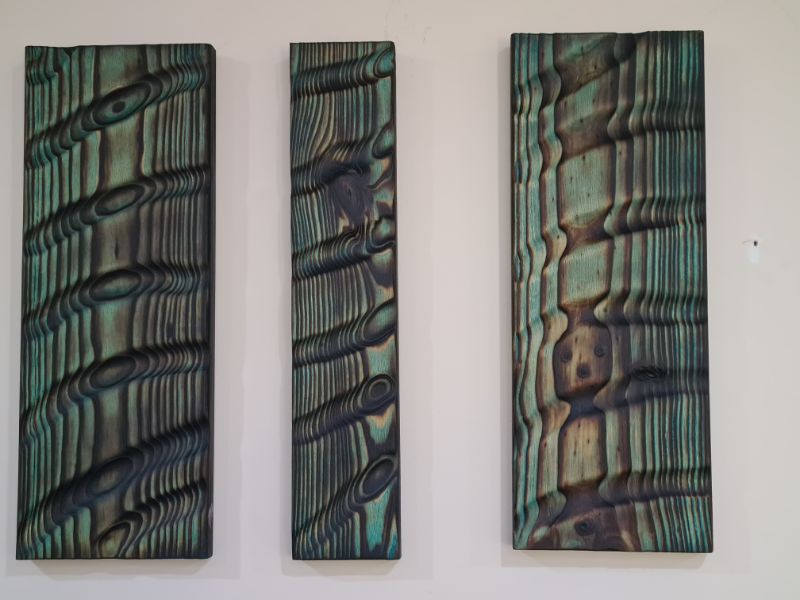
A few months ago I posted some wooden wall art panels with a unique abalone effect that I discovered by mistake. This post has become one of my most popular posts because it was so unique. I had so many compliments on this wall art but I also got a few comments saying that it looks too hard. While I personally found them easy to make the process is very time-consuming. Today I will share how I cut my work time in half by using a gouge ball to create this Shou sugi ban wall art.
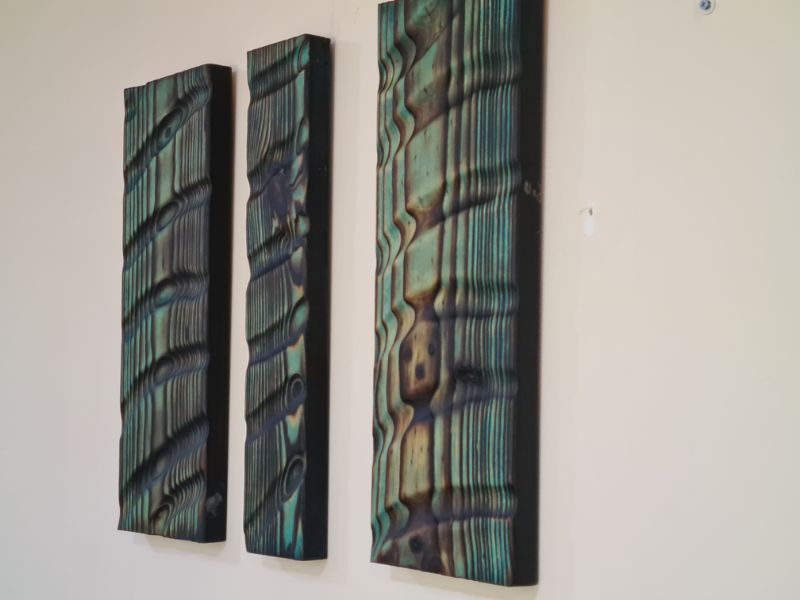
The image below was the outcome of the original project where I discovered this technique. I used a wood router to add the grooves into the wood and spend hours removing the square edges left by the router. Over the years I have done a few Shou Sugi ban projects and know if I burn the wood deep enough it is easier to sand. I got so bored spending hours sanding the grooves I thought I would try and burn the sides to speed up the process. The abalone effect you see below was the result, I did call it snakeskin-effect at first but I think it looks more like an abalone shell. A project like this can take a few days to complete so when I saw a gouge ball on Pinterest I was hoping it would work for this project
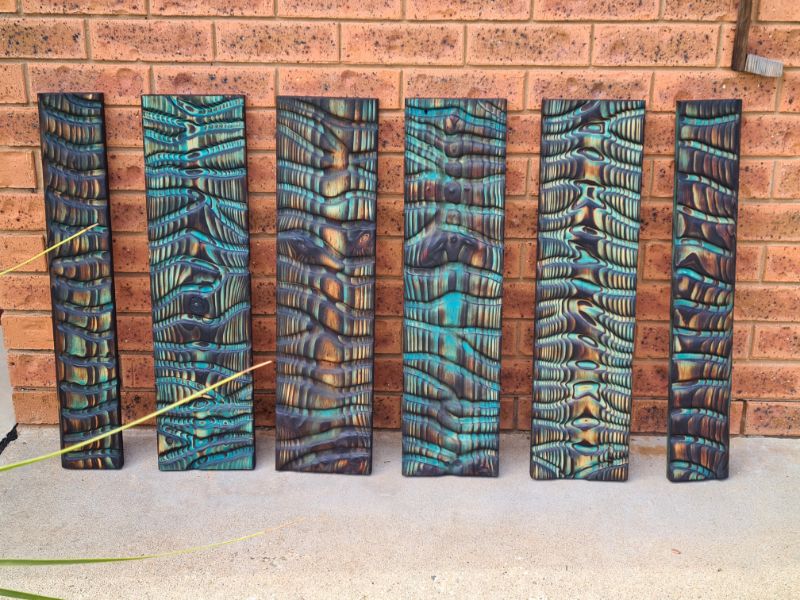
Gouge ball Shou Sugi ban
*This post may contain affiliate links. This means I earn a small commission on links used at no extra cost to you. Please see my disclosure policy for more information.**
What is Shou Sugi Ban?
Shou sugi ban, also known as yakisugi, is a traditional Japanese wood finishing technique that involves charring the surface of the wood to create a unique and visually striking effect. The term “shou sugi ban” translates to “burnt cedar board” in English.
The process of shou sugi ban typically involves using a propane torch or open flame to char the surface of the wood. The wood is carefully burned until it develops a layer of char, which is then cooled and cleaned. The charred layer is often brushed or scrubbed away to reveal the natural grain patterns of the wood beneath. Finally, the wood is treated with an oil or sealant to preserve its appearance and protect it from the elements.
Shou sugi ban has several benefits beyond its aesthetic appeal. The charring process creates a carbonized layer on the wood that is highly resistant to rot, insects, and fire. It also helps to improve the wood’s durability and longevity. As a result, shou sugi ban is commonly used for exterior siding, decking, and other applications where weather resistance is important.
The technique has gained popularity in modern architecture and design due to its unique look and eco-friendly nature. Shou sugi ban can be applied to various types of wood, although traditional Japanese cedar, known as “sugi,” is commonly used. The process can be adapted to different levels of charring, ranging from a light charring that preserves more of the wood’s original colour to a deeper char that creates a darker, more dramatic effect.
Gouge ball
The video I saw on Pinterest using the gouge ball was a guy making wooden spoons. He used the gouge ball to create the groove in the wooden spoon, so I believed it would work to create the groove in my wall art.
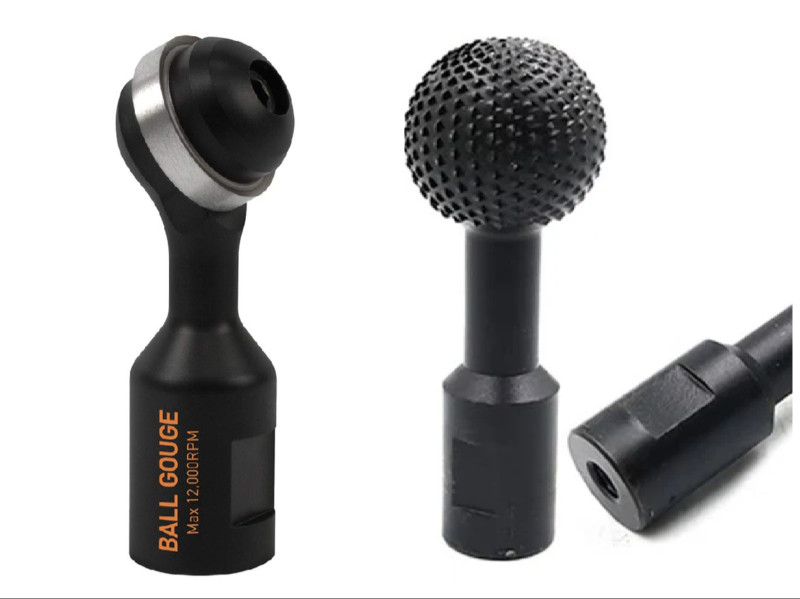
I did a search on the internet and found two variations of the gouge ball. The first one was by a company called Arbortech with a price of around $120.00 and the second gouge ball
looked different with a price of under $30. Because I was unsure if this would work I went for the cheaper option, which worked perfectly for this project. The gouge ball is an attachment that fits onto an angle grinder
. I bought the 40mm ball for this project.
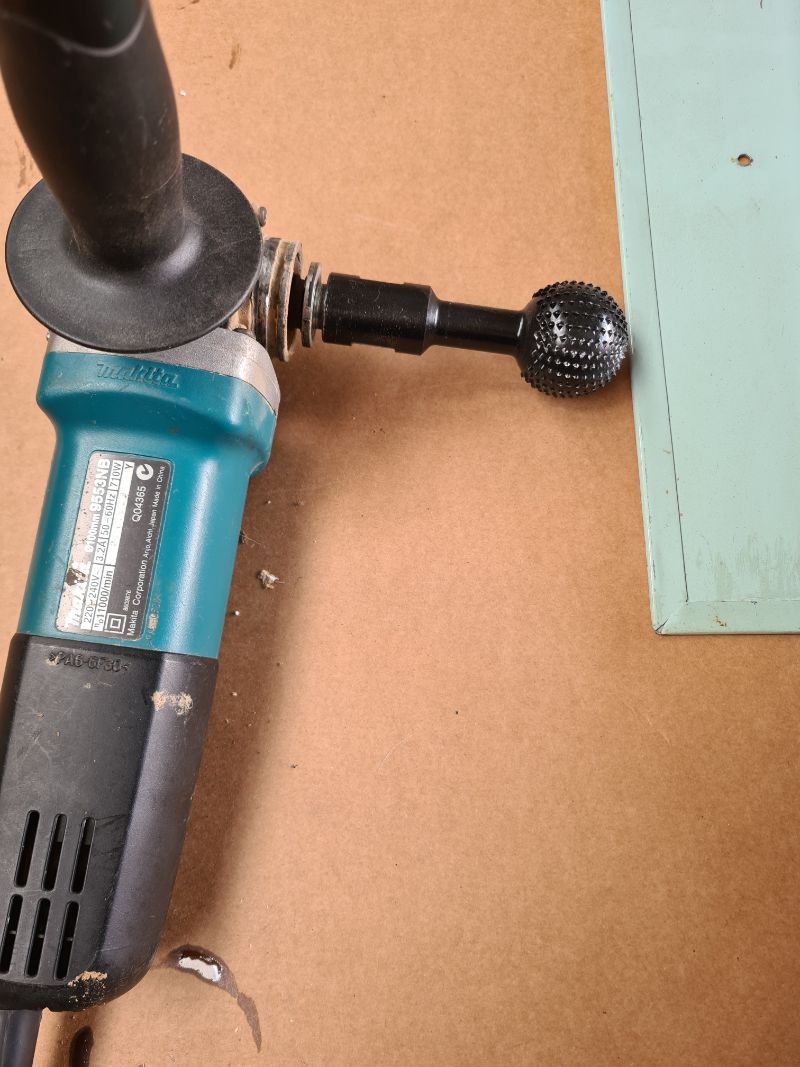
Find suitable wood
For this project, I used some recycled pine from an old bed frame. I prefer to use pine because the wood is softer and I have found I get more dramatic results.
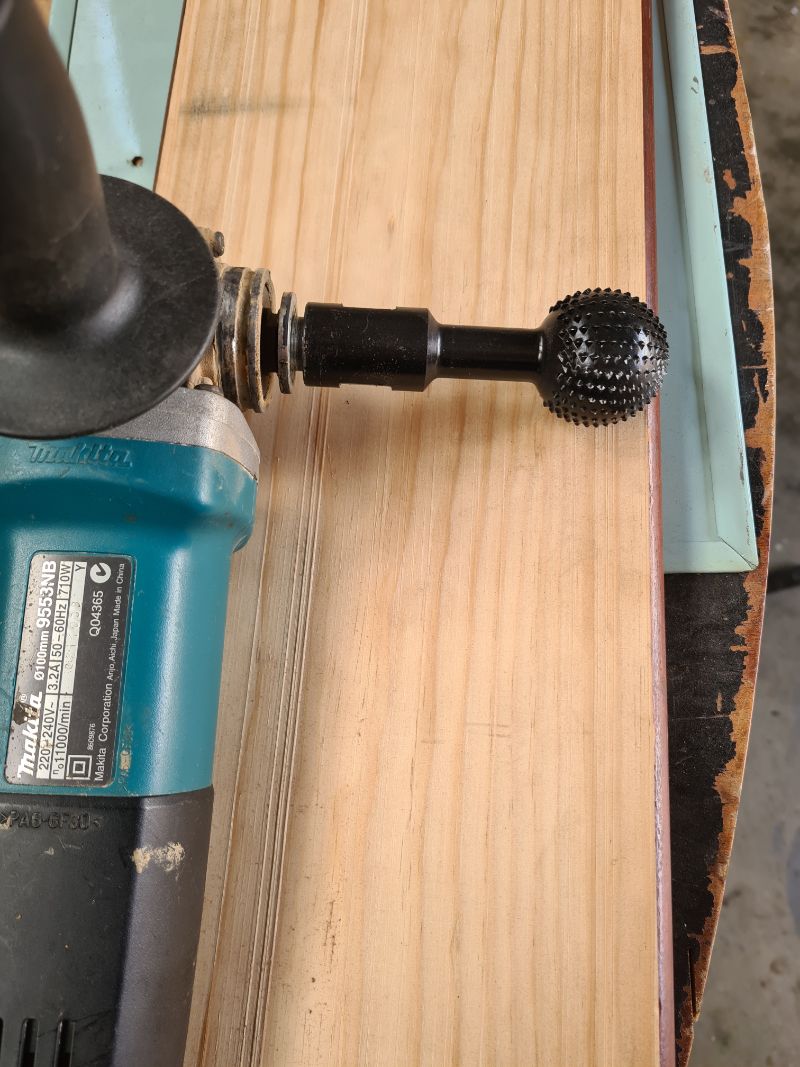
Start by clamping your piece of wood to the table surface. The grinder with the gouge ball is very powerful and will cause the wood to fly off the surface. Yes, I learned that the hard way. To add the groove it is as simple as moving the gouge ball across the surface. I did a couple of passes to get my grooves deeper. The surface was not very smooth after the groove was added but once the wood is burnt it will be smoothed out.
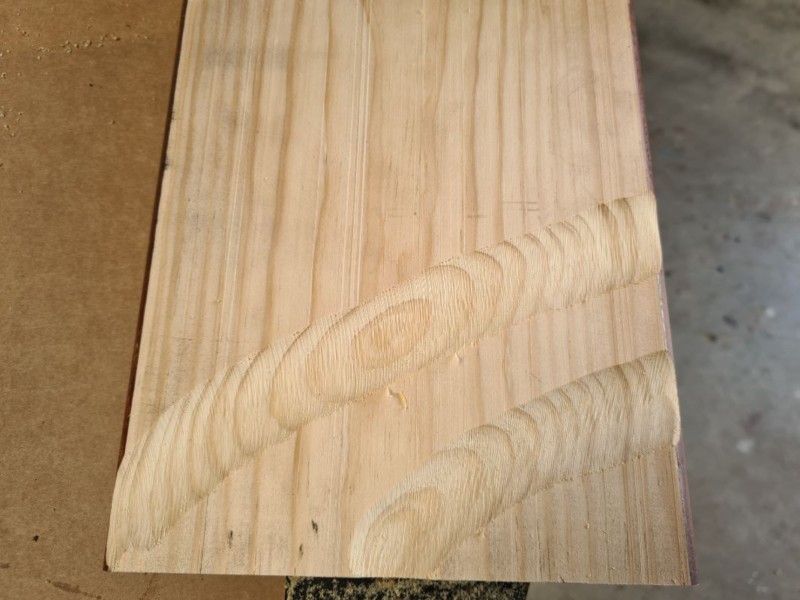
In hindsight, I think the grooves would have looked nicer if they were running in one line across each panel. But hey-ho we live and learn.
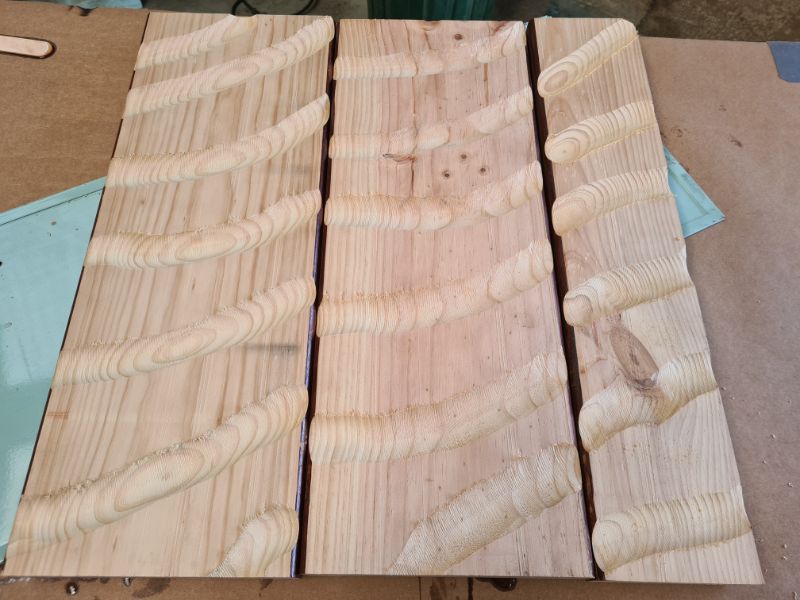
Burning the wood
To burn the wood you will need a blowtorch. Using the blow torch you burn the surface until the top layer of wood is cracked and charred.
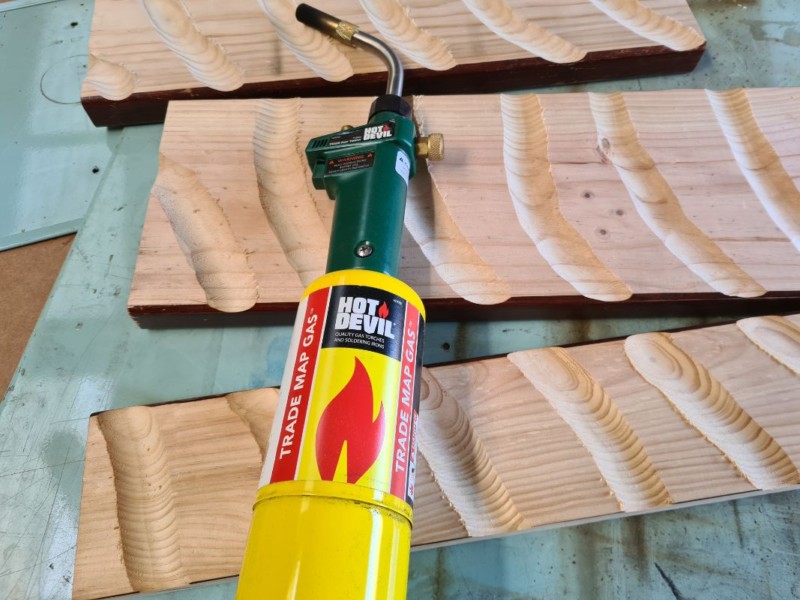
Sanding the wood
To sand, the charred surface you have two options that I use. You can use a wire brush and rub it with the grain of the wood until you see the light wood coming through. This is very time consuming and will take a few hours.
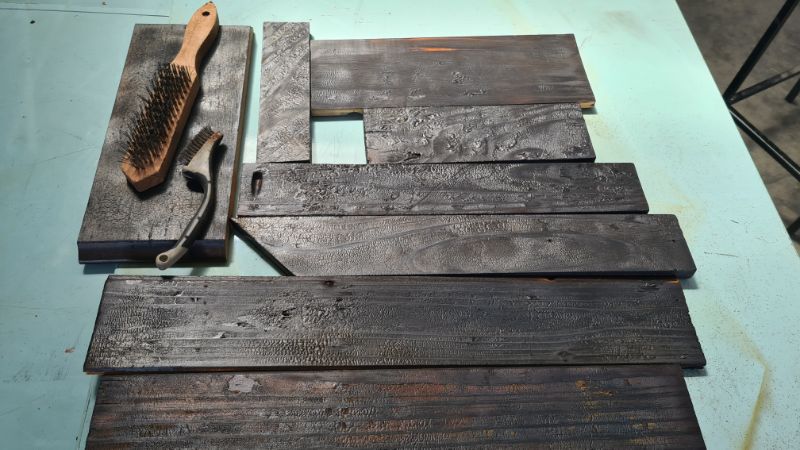
Another option is to use a coarse nylon brush that can attach to your drill. This is the fastest way I have found and cuts your sanding time in half. The brush is held over the surface sanding with the grain. You will notice the great texture on the surface after this step. If you want more texture you can burn the wood again and sand deeper into the surface.
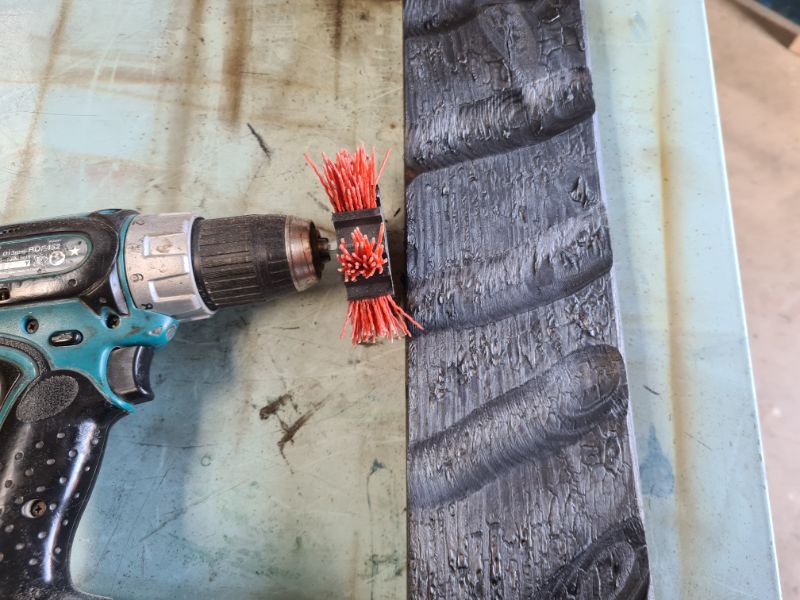
To create the multicoloured look you need to sand some areas deeper than others. The more you sand the lighter the wood will become and the more vibrant the colour will be. If you leave some areas darker like the images below the results will be more dramatic. You will also notice that the woodgrains and the knots will stay black and raised.
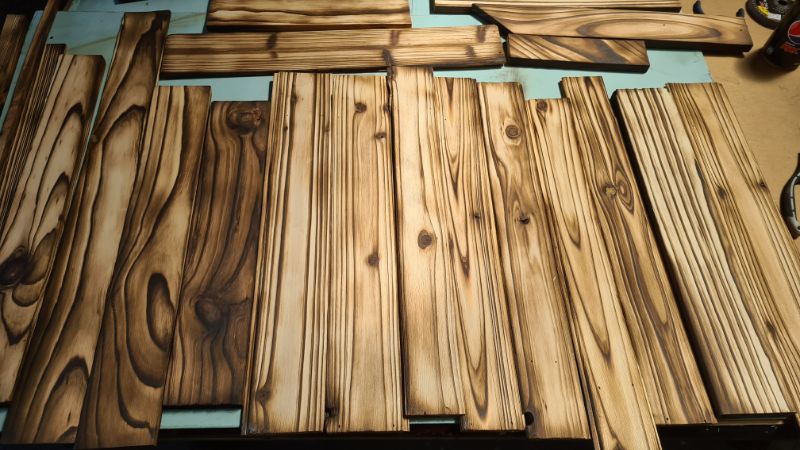
If you prefer the plain wood colour you can stop now and add some oil to protect the surface. This will also deepen the colour of the wood.
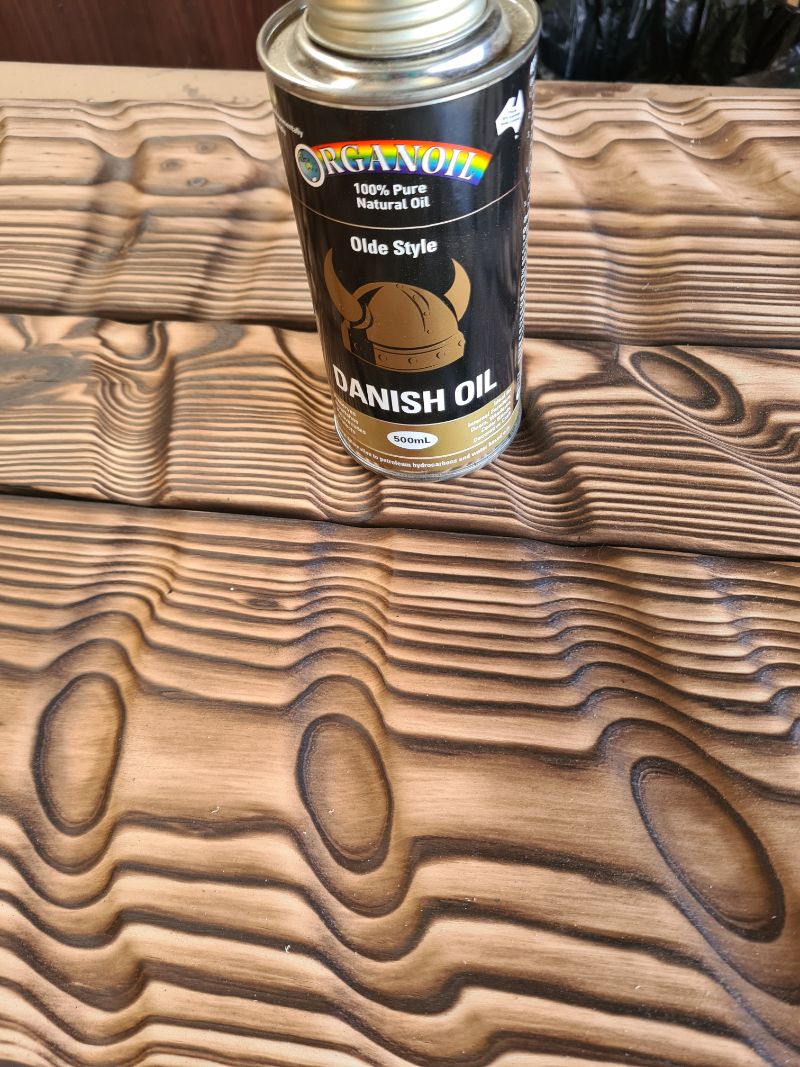
I made these panels to decorate my porch, but unfortunately, they blended in with the bricks and I thought the effects were lost. So I changed my mind and went ahead and painted them.
Painting the wood
There are a few ways to paint Shou Sugi Ban. I did a few tests a while back trying different products and shared the results in this post. When adding paint to the raw wood you will need to wet the surface first to prevent the staining as I got in the image below.
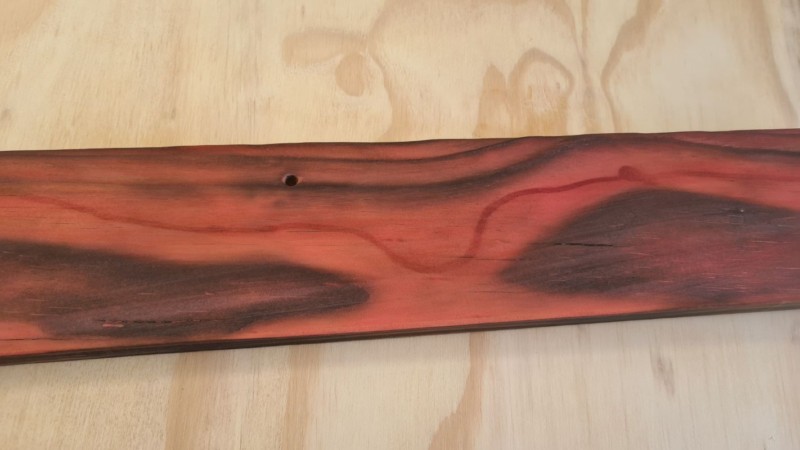
I did not need to do this because I had already added the oil. To stain this wood I used regular indoor house paint.
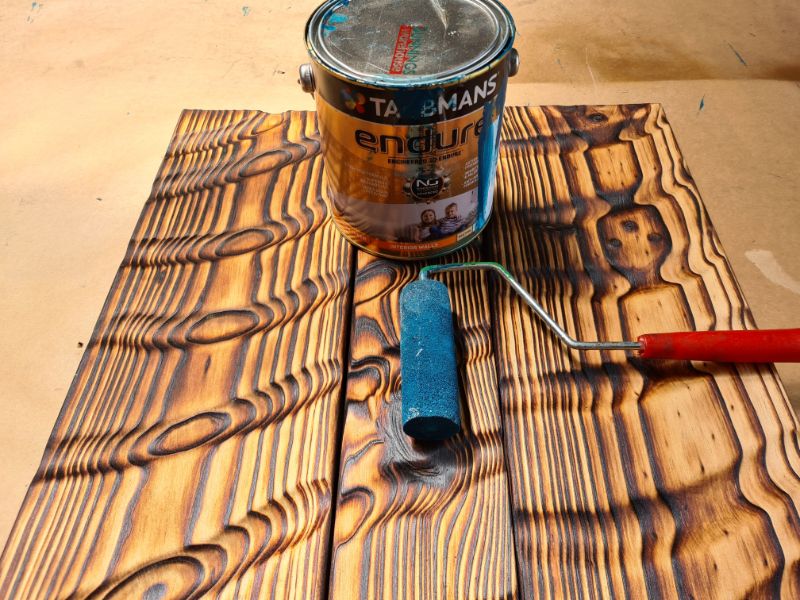
To apply the paint I used a paint roller and added a thick layer to the surface and let it soak in for about 5 minutes.
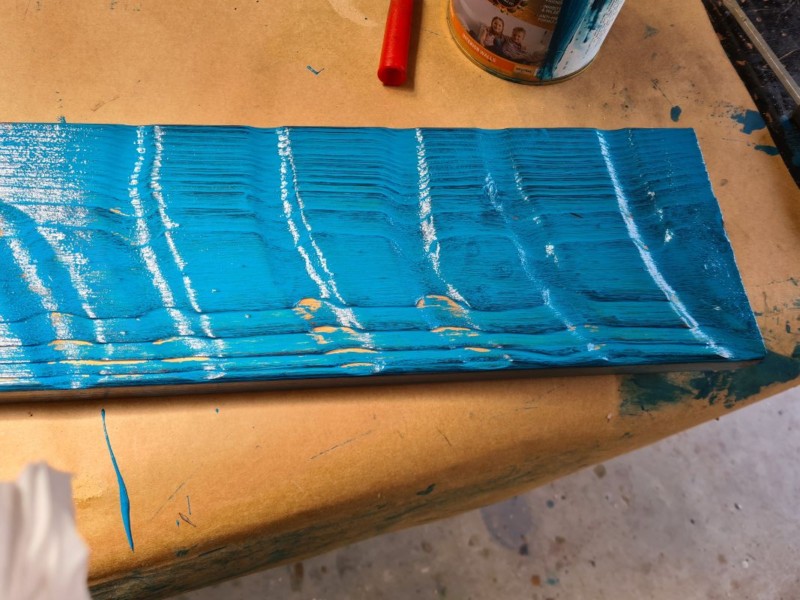
I used a clean rag to wipe off the excess paint. You can repeat this step if you want a darker colour.
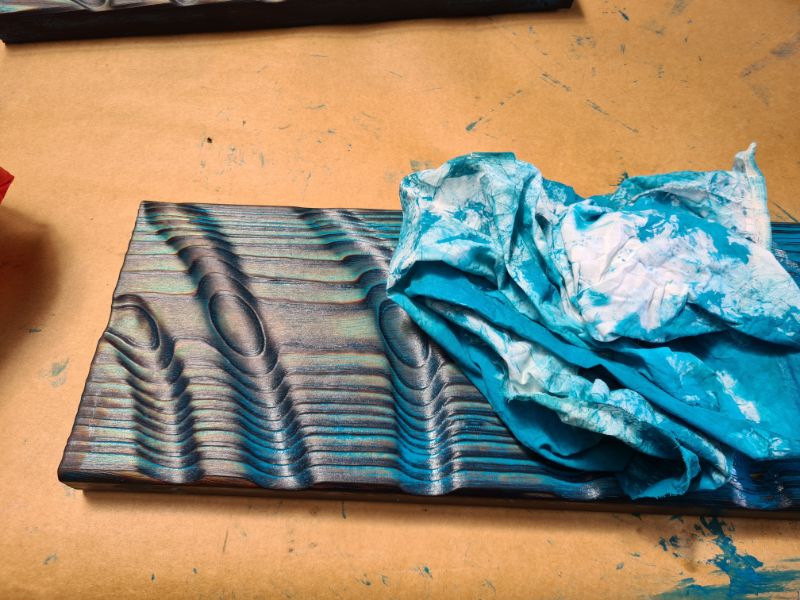
I left the paint to dry before adding some more oil to seal the surface. While I only added one colour to these panels, the different depths the wood was sanded created the other colours. I have added some close-up images so you can get a better look at the effects of the shou sugi ban.
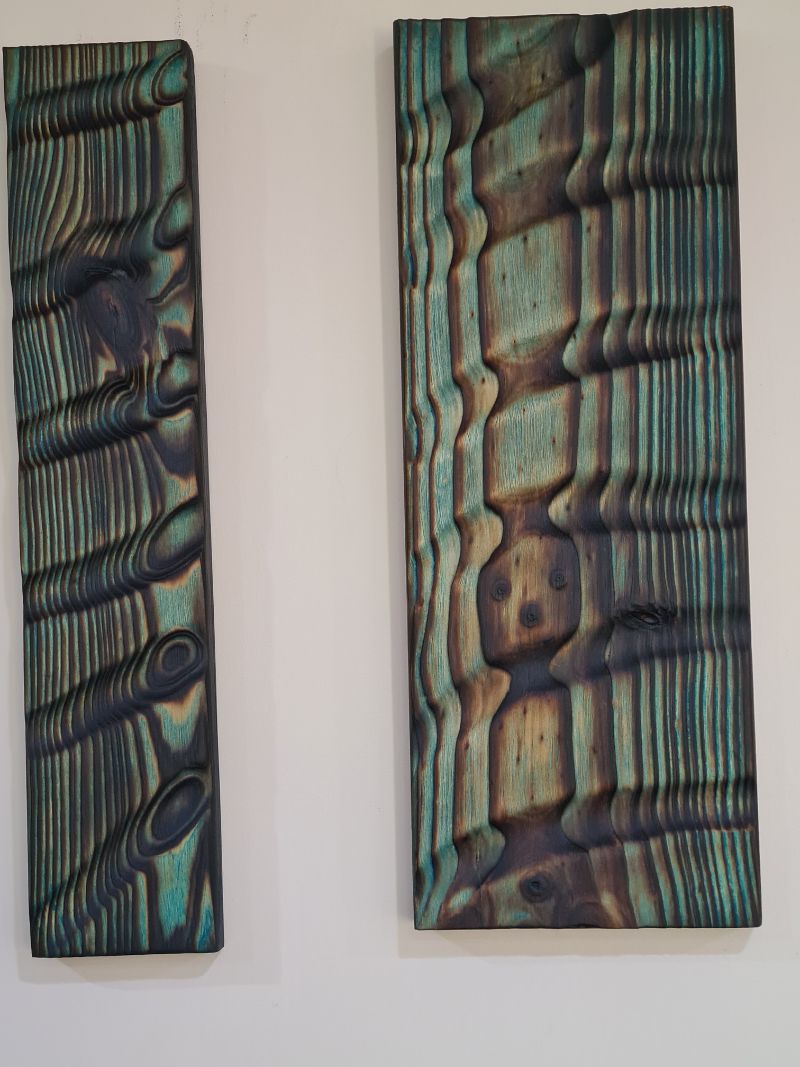
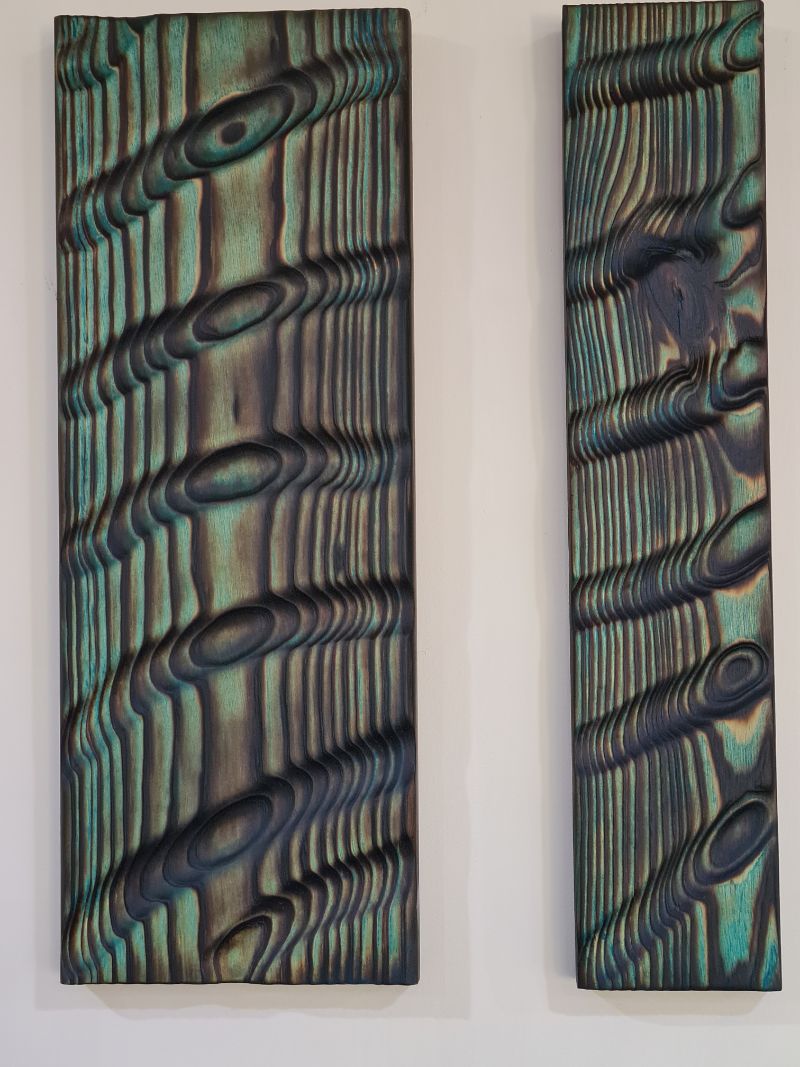
More Shou Sugi ban project ideas
This wall art below was my first Shou sugi ban project.
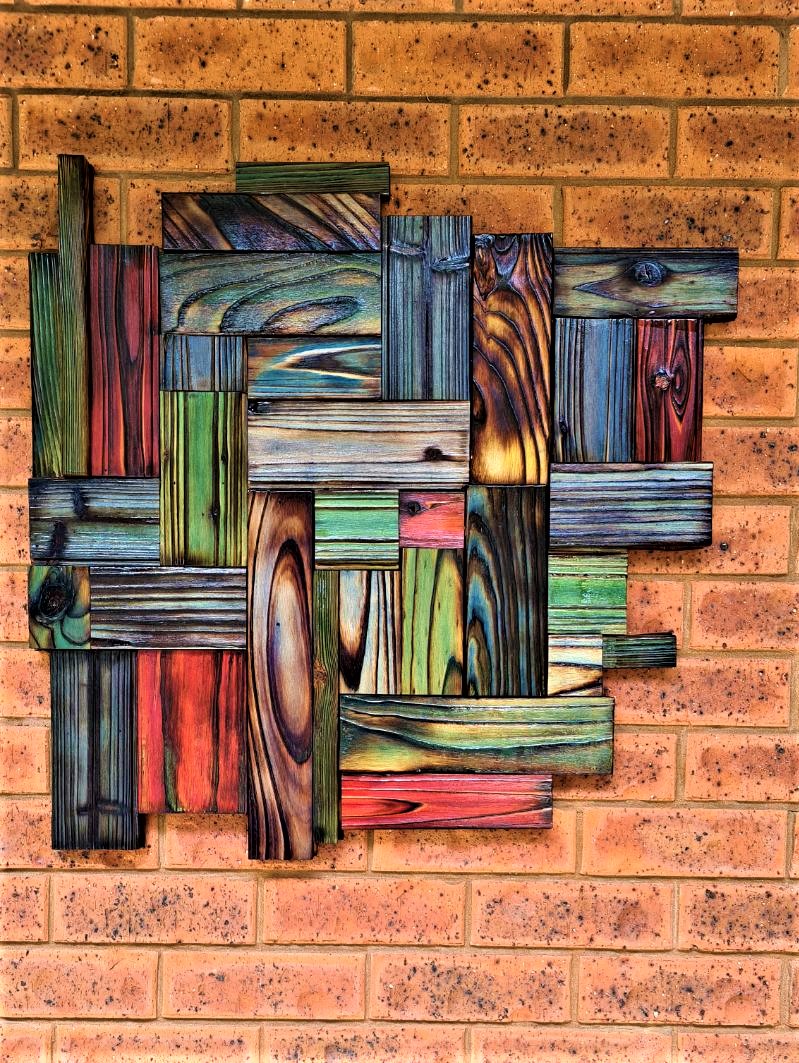
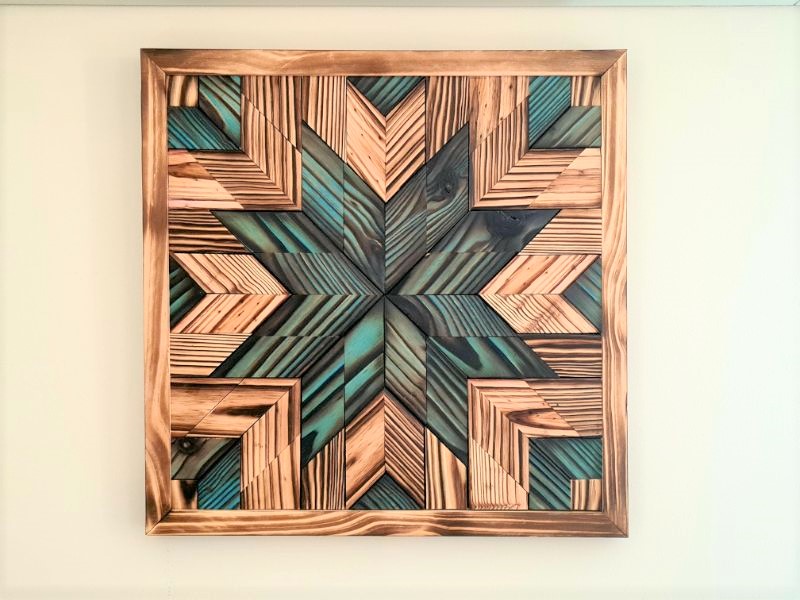
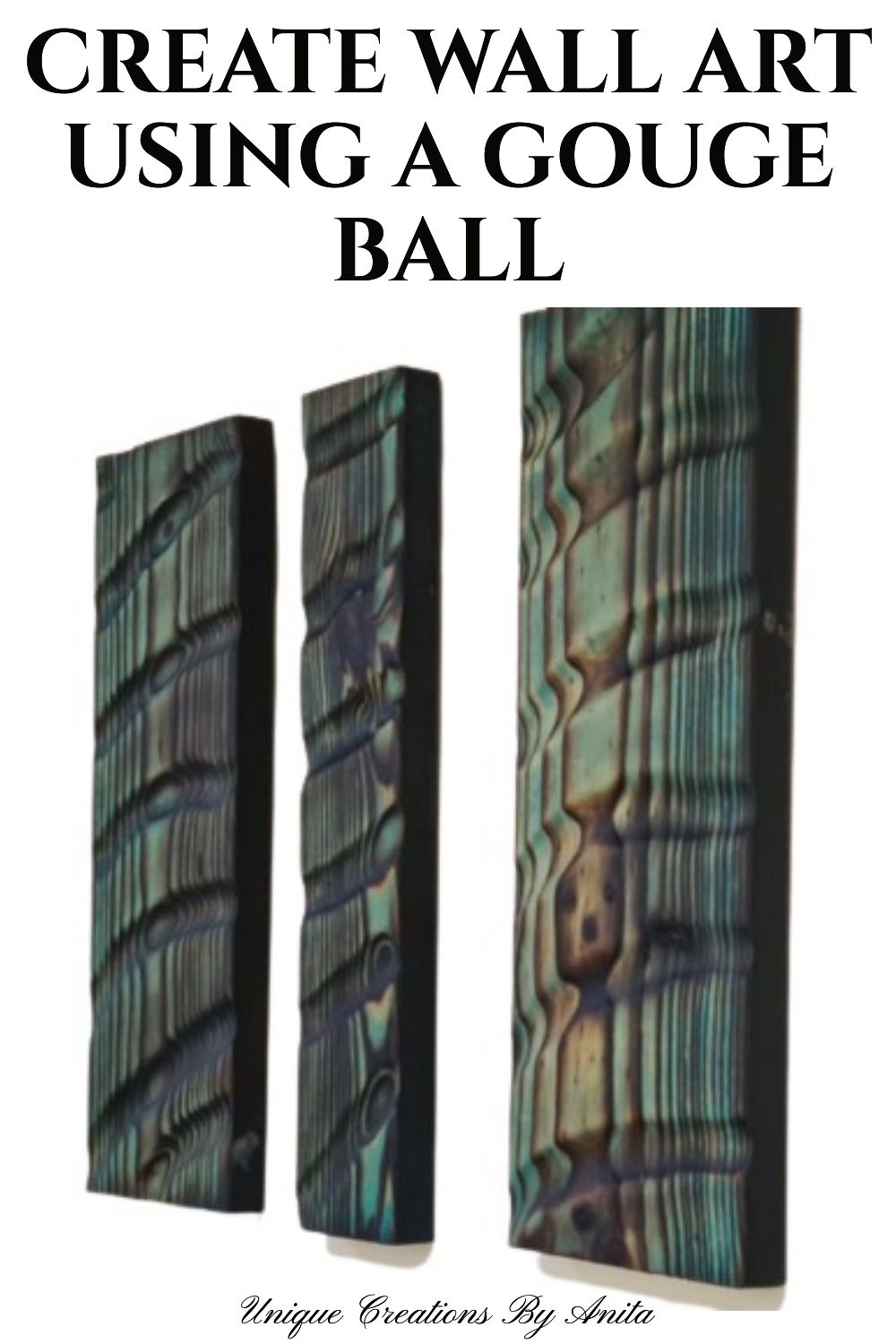
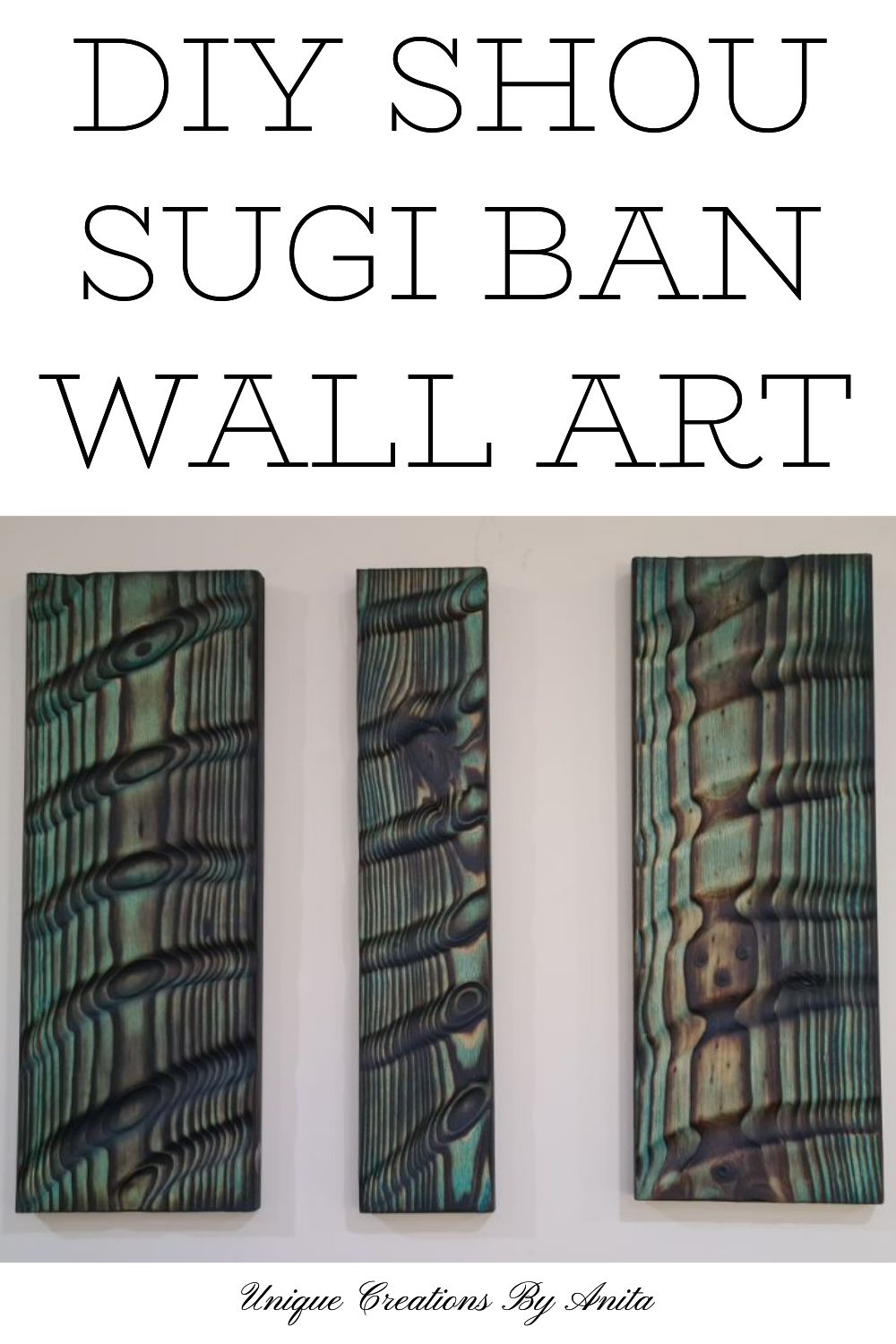
If you are looking for any of the items used in this project, please consider using our links. By clicking on the links we will earn a small commission at no extra cost to you. Which helps us come up with new and exciting ideas to share with you. Please feel free to share or leave a comment we would love to hear your thoughts.

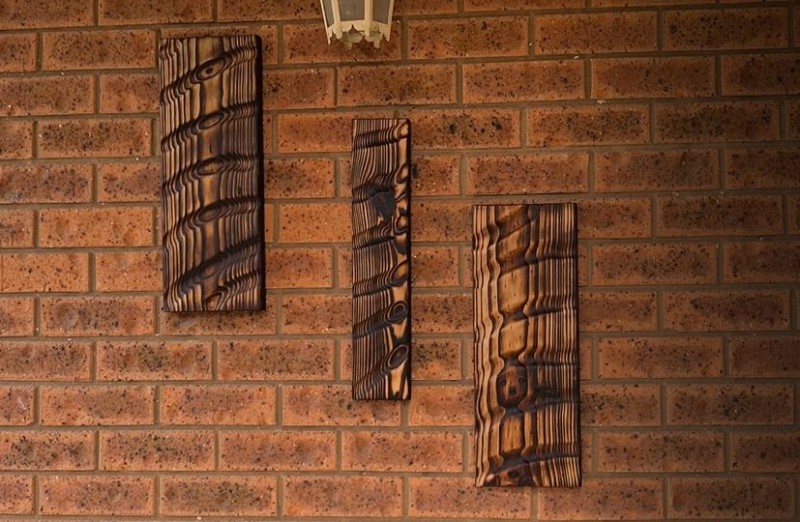
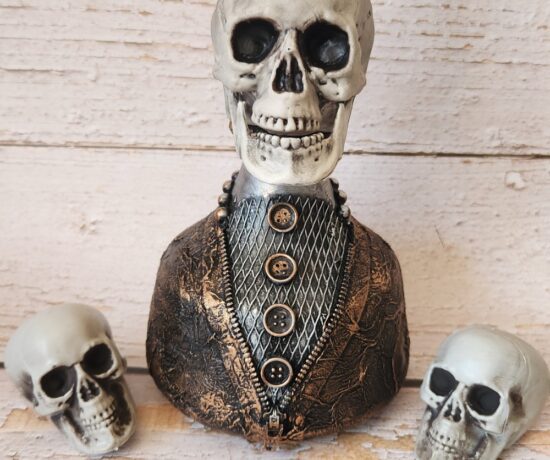
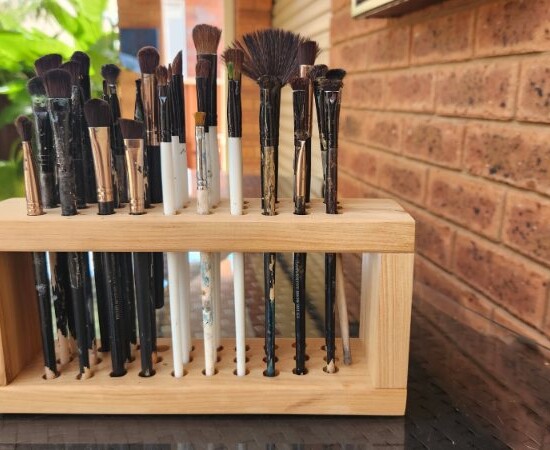
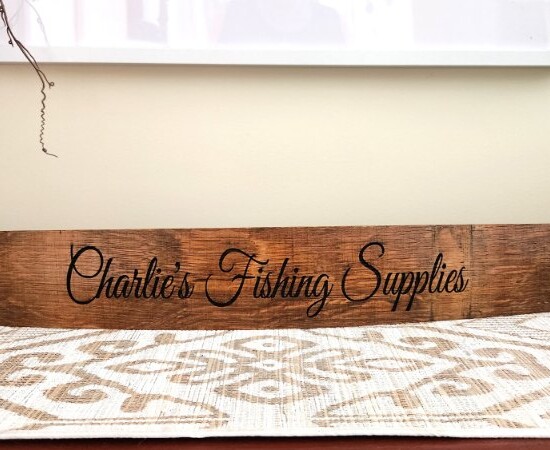
16 Comments
Sara
June 13, 2022 at 10:42 pmWhat a cool technique; I’ve never heard of a gauge ball but now I’m intrigued! Love how you’re always pushing the envelope of Shou Sugi Ban!
Anita Holland
June 14, 2022 at 2:00 pmThanks Sara, it is such a beautiful effect I just love playing around with it to see what I can come up with.
Doron
July 18, 2023 at 5:22 pmBeutifull works.I was wandering if the oil doesn’t not seals the wood from obsorbing the paint. Did u try water base colors?
Thank you
Doron
Anita Holland
July 18, 2023 at 9:22 pmNo, the oil worked great. I did try a water-based paint and sealed it and found the colours faded. This one has never changed and it is outside.
Michelle
June 14, 2022 at 12:08 amThis is amazing, Anita! I totally love this stunning effect. Pinning!
Michelle
https://mybijoulifeonline.com
Anita Holland
June 14, 2022 at 2:00 pmThank you so much Michelle.
Michelle Leslie
June 14, 2022 at 11:08 pmWHAT!!!! I need one of those gouge balls and to look for my angle grinder 😀 I haven’t used it in years but I have to try this out. It looks like so much fun and the results are gorgeous
Kippi
June 16, 2022 at 1:22 amWow, using a gouge ball transforms the wood. The colors and the wood grain combined in your art design are stunning. Pinned
maria
June 16, 2022 at 11:28 amThis is something I would love to do. I love working with wood pieces. This is beautiful
Anita Holland
June 17, 2022 at 5:22 pmThanks Marie, I love doing this style of wood work because you never know what you will get but it is always unique.
CC COLE
June 17, 2022 at 10:19 pmthese are just gorgeous!! i love your unique creativity!
Anita Holland
June 18, 2022 at 4:50 pmThank you so much.
Marty Walden
June 18, 2022 at 12:38 amWhat a unique and beautiful type of art! Great job!
Anita Holland
June 18, 2022 at 4:50 pmThanks Marty, they are so much fun to make.
Andy Acock
July 22, 2024 at 12:54 pmI have tried this a few times using standard pine boards but can never get the beautiful grain patterns you have obtained. Can you tell us exactly what type of wood,how thick,etc,i know it’s pine but is it a specific type of pine from a big box store,etc…??
And anymore detail on the grain pattern you look for on those boards that seem to make the best patterns?
Thanks,Andy
Anita Holland
September 5, 2024 at 11:58 pmI don’t know much about pine. I used recycled wood. It was from the frame of a pine bed. You should get the grain with any pine if you burn deep enough. The only wood I struggle with is hardwood.